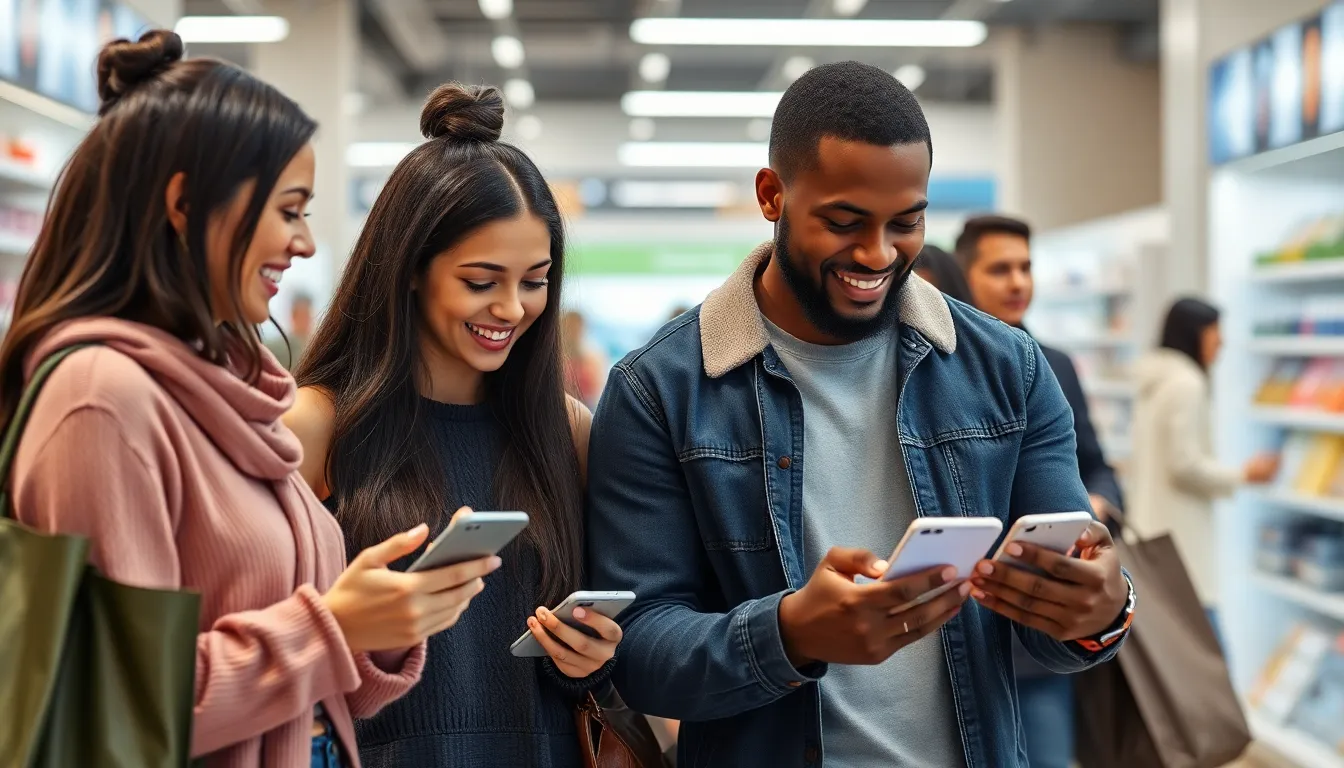Table of Contents
ToggleIn today’s fast-paced world, shopping apps have transformed the way people buy products. With just a few taps on their smartphones, users can explore a vast array of items, compare prices, and enjoy exclusive deals—all from the comfort of their homes. This convenience has made shopping apps an essential tool for savvy consumers looking to save time and money.
As technology continues to evolve, these apps are becoming more sophisticated, offering personalized recommendations and seamless payment options. Whether it’s fashion, electronics, or groceries, shopping apps cater to diverse needs, making them indispensable in the modern retail landscape. Understanding their features and benefits can enhance the shopping experience and help users make informed choices.
Overview Of Shopping Apps
Shopping apps transform the way consumers engage with retail. Users can instantly browse a wide array of categories, such as fashion, electronics, and groceries, all from their devices. These applications provide the convenience of comparing prices across multiple retailers, allowing for informed purchasing decisions.
Personalization plays a crucial role in the functionality of shopping apps. Algorithms analyze user behaviors and preferences to present tailored product suggestions. This feature enhances the shopping experience by surfacing relevant items, increasing the chances of purchase.
Payment options within shopping apps offer security and efficiency. Users benefit from streamlined checkout processes that often include methods like credit cards, digital wallets, and installment payments. The incorporation of these features fosters a faster, more satisfying shopping experience.
Additionally, shopping apps frequently deliver exclusive deals and promotions. Many platforms grant access to special discounts, flash sales, and loyalty rewards. These incentives encourage users to choose shopping apps over traditional retail channels.
User-friendly interfaces in shopping apps simplify navigation. Categories are clearly defined, and search functionalities allow for quick access to desired products. This ease of use contributes to increased consumer satisfaction and engagement.
As technology continues to evolve, shopping apps are integrating advanced features, such as augmented reality and AI-driven chatbots. These innovations further enhance user interaction and support throughout the buying process.
Popular Shopping Apps


Shopping apps enhance the retail experience by offering various features that cater to consumers’ needs. Below are some outstanding examples of notable shopping apps along with their defining characteristics.
App Features
- Price Comparison: Shopping apps, like ShopSavvy and PriceGrabber, enable users to compare prices across multiple retailers quickly. Users can access real-time pricing information to make informed purchasing decisions.
- Personalized Recommendations: Retailers such as Amazon and eBay utilize algorithms to analyze browsing and purchasing behaviors. Users receive tailored product suggestions based on their interests and past interactions.
- Augmented Reality: Apps like IKEA Place and Sephora utilize augmented reality to provide immersive shopping experiences. Users can visualize products in their own spaces or try on virtual makeup before buying.
- Multiple Payment Options: Most shopping apps offer various payment methods, including credit/debit cards, PayPal, and digital wallets. This variety enhances convenience and ensures secure transactions.
- Exclusive Deals and Promotions: Retailers such as Target and Walmart frequently provide app users with exclusive discounts and promotions. These incentives encourage consumers to shop via mobile platforms.
User Experience
- Intuitive Interface: Successful shopping apps prioritize user-friendly interfaces. Clear navigation and attractive layouts enhance the overall shopping experience, making it easier for users to find products.
- Seamless Checkout Process: Efficient shopping apps simplify the checkout process. By minimizing steps and offering saved payment methods, users complete purchases quickly and with minimal frustration.
- Product Reviews and Ratings: Apps like Etsy and Best Buy feature user-generated reviews and ratings. Access to these insights builds trust and aids users in selecting high-quality products.
- Order Tracking: Most shopping apps include order tracking features, allowing users to monitor their purchases. This transparency keeps consumers informed about delivery statuses and estimated arrival times.
- Customer Support: Many shopping apps enhance user experience by offering integrated customer support options. Chatbots, FAQs, and direct contact with customer service representatives help resolve issues efficiently.
Advantages Of Shopping Apps
Shopping apps offer several advantages that enhance the consumer experience. These apps provide users with a streamlined way to shop, access deals, and compare products efficiently.
Convenience
Convenience stands out as a primary benefit of shopping apps. Users can shop from anywhere, eliminating the need to visit physical stores. Users access products 24/7, allowing for spontaneous purchases or midnight shopping sessions. Shopping apps often feature saved payment information, simplifying transactions and minimizing checkout time. Users receive notifications for promotions and reminders, ensuring they never miss an exclusive offer or flash sale.
Variety And Availability
Variety and availability significantly enhance the user experience in shopping apps. Users can explore a vast selection of products across multiple categories, from electronics to fashion. Users compare prices from various retailers effortlessly, ensuring they make informed purchase decisions. Apps often feature user reviews and ratings that guide choices, enhancing confidence in product quality. Availability extends beyond local options, allowing users to discover unique items from international sellers.
Disadvantages Of Shopping Apps
Shopping apps offer numerous advantages, yet they also come with several disadvantages that users should consider.
Security Concerns
Security concerns rank high among the disadvantages of shopping apps. Users frequently enter sensitive personal information, including credit card numbers and addresses. Data breaches can expose this information to cybercriminals, leading to identity theft and financial loss. Many apps may lack robust security measures, increasing vulnerability. Consumers must verify an app’s security protocols, such as encryption and secure payment gateways, to avoid potential risks.
Overwhelming Options
Overwhelming options can detract from the shopping experience. Vast product selections across various categories often complicate decision-making for users. The abundance of choices may lead to indecision, frustration, or even choice overload—a phenomenon where too many options inhibit satisfaction. Many users may spend excessive time sifting through similar products rather than making quick purchasing decisions, potentially decreasing the app’s intended convenience.





